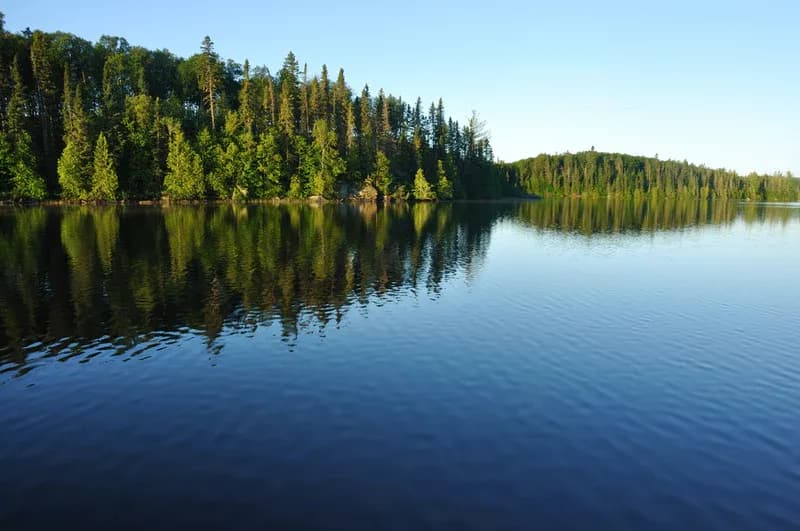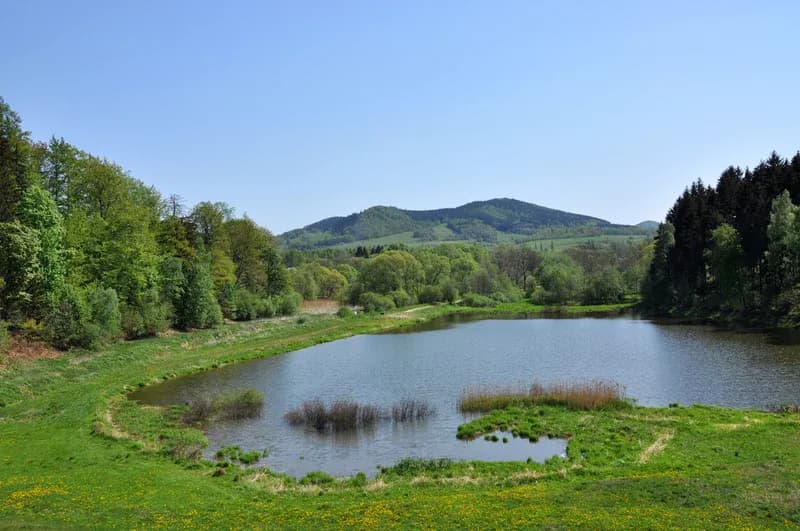Muck & Lake Weed Control - Green & Guaranteed!
Free shipping in USA (lower 48 states), Canada (almost free) & EU
Muck & Lake Weed Control - Green & Guaranteed!
Free shipping in USA (lower 48 states), Canada (almost free) & EU
Lakes and ponds are two types of freshwater ecosystems that are often confused with one another. While both are bodies of water, they have distinct differences in size, depth, and ecological characteristics. In this essay, we will explore the differences between lakes and ponds, how to differentiate them, their characteristics, what they are used for, and the types of plants and animals that inhabit them. To begin with, lakes are generally larger and deeper than ponds. A lake is defined as a large body of water that is surrounded by land and is usually deep enough for boats and other watercraft to navigate. Lakes are typically formed by natural processes such as glaciation, tectonic activity, or volcanic activity. They can also be created by human-made dams or reservoirs. Examples of lakes include Lake Superior, Lake Victoria, and Lake Baikal.
In contrast, ponds are smaller and shallower bodies of water that are also surrounded by land. Ponds are generally less than 10 acres in size and are typically shallow enough for sunlight to penetrate to the bottom. They can be formed by a variety of natural processes, such as flooding, beaver dams, or geological depressions. Ponds can also be created by human-made structures such as fish ponds, swimming pools, or irrigation ponds. Examples of ponds include Walden Pond in Massachusetts and Stow Lake in San Francisco. One of the reasons people often confuse lakes and ponds is that they both have similar physical characteristics. Both are bodies of freshwater that are surrounded by land, and both can be home to a wide variety of plant and animal life. However, there are some key differences that can help you differentiate between the two.
Differences:


In terms of their characteristics, both lakes and ponds play important roles in the ecosystem. They provide habitat for a wide variety of plant and animal life, and they can also be used for recreational activities such as swimming, boating, and fishing. However, they differ in their specific roles and functions within the ecosystem.
Lakes, for example, are often important for regulating the water cycle and maintaining water quality. They can store large amounts of water, which can help to prevent flooding during heavy rains and droughts during dry spells. Additionally, lakes can act as sinks for nutrients and pollutants, which can help to prevent them from entering downstream waterways and causing harm to aquatic ecosystems. Ponds, on the other hand, are often important for providing breeding and nesting habitat for a variety of aquatic plants and animals. Because they are shallower than lakes, they can support a wider variety of plant life, including submerged aquatic vegetation and emergent vegetation such as cattails and bulrushes. These plants provide cover and food for a variety of fish and wildlife species, and they also help to stabilize the shoreline and prevent erosion.
When it comes to the types of plants and animals that inhabit lakes and ponds, there is a great deal of overlap between the two ecosystems. Both can be home to a wide variety of fish species, including bass, perch, walleye, and trout. Both can also support a variety of aquatic invertebrates, such as insects and crustaceans, that serve as food for fish and other predators. However, there are some differences in the types of plant and animal life that are commonly found in lakes versus ponds. Lakes, for example, are more likely to be home to deep-water species such as lake trout, whitefish, and ciscoes. They can also support large populations of planktonic algae, which can form harmful algal blooms under certain conditions.
Ponds, on the other hand, are more likely to be home to species such as bullfrogs, painted turtles, and muskrats. They can also support a wider variety of aquatic plants, including submerged and emergent vegetation, which can provide important habitat and food for a variety of fish and wildlife species.
In conclusion, while lakes and ponds may appear similar at first glance, they are distinct ecosystems with unique characteristics and functions. Understanding the differences between lakes and ponds can help us appreciate the ecological diversity and complexity of freshwater ecosystems, and can also help us make informed decisions about how to protect and manage these important resources for future generations.